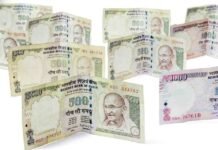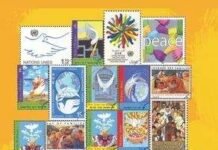Sengol is a Tamil word meaning righteousness. It is also the name of a historic sceptre that was used as a symbol of transfer of power from one ruler to another in the ancient Chola dynasty. The sceptre is a five feet long ornamented rod with a Nandi bull on top, representing justice. The sceptre was given to Jawaharlal Nehru, the first Prime Minister of India, by the Adhinam of Tamil Nadu, a religious institution, on the eve of India’s independence in 1947. The sceptre is now being moved to Delhi for installation at the new Parliament building, which will be inaugurated by Prime Minister Narendra Modi on May 28, 2023.
Why is the Sengol being installed in the new Parliament?
The Sengol is being installed in the new Parliament as a reminder of the historic moment of India’s independence and the symbolism of the Sengol as a representation of righteousness and justice. The sceptre (Sengol) is also seen as a gesture of respect and recognition of Tamil culture and heritage. The installation of the sceptre is part of a ceremony that will be performed by the head priest of the Madurai Adheenam, a religious institution that has been associated with the Sengol since ancient times.
What is the significance of the Nandi bull?

The Nandi bull is a symbol of justice and a vehicle of the Hindu god Shiva. Nandi means happiness, joy, and satisfaction in Sanskrit. Nandi, revered as the divine protector, holds a significant role as the guardian deity of Kailash, the sacred abode where Shiva, the mighty god of destruction and transformation, resides., who always sits near him and listens to his teachings. Nandi is also a symbol of meditation, receptivity, and eternal waiting. Nandi is revered by Hindus as a source of wisdom and guidance.
Who made the Sengol (sceptre)?
The creation of the sceptre can be attributed to the skilled craftsmanship of Vummidi Bangaru Chetty, a renowned jeweller who gained fame for his exquisite creations during the era of the Madras Presidency. He crafted the sceptre with silver and gold plating. The sceptre was made by his two sons, Vummidi Ethirajulu and Vummidi Sudhakar, who are still alive and living in Chennai. They made the sceptre in a month’s time, following the directions of their elder brother.
How did Nehru use the sceptre?
Nehru used the sceptre as a symbol of the transfer of power from the British to the Indian government on August 14, 1947. He received the sceptre from Lord Mountbatten, the last Viceroy of India, who asked him what ceremony should be followed to mark the occasion. Nehru consulted C. Rajagopalachari, who suggested the Chola model of handing over the sceptre from one king to another. The sceptre was prepared by the Thiruvavaduthurai Adheenam, a religious institution in Tamil Nadu, and presented to Nehru by its head priest and other dignitaries. Nehru accepted the sceptre with gratitude and respect and later kept it in the Nehru Gallery of the Allahabad Museum.
Also Read - Why Governor is Important in India?





















[…] What is Sengol and Its History? […]